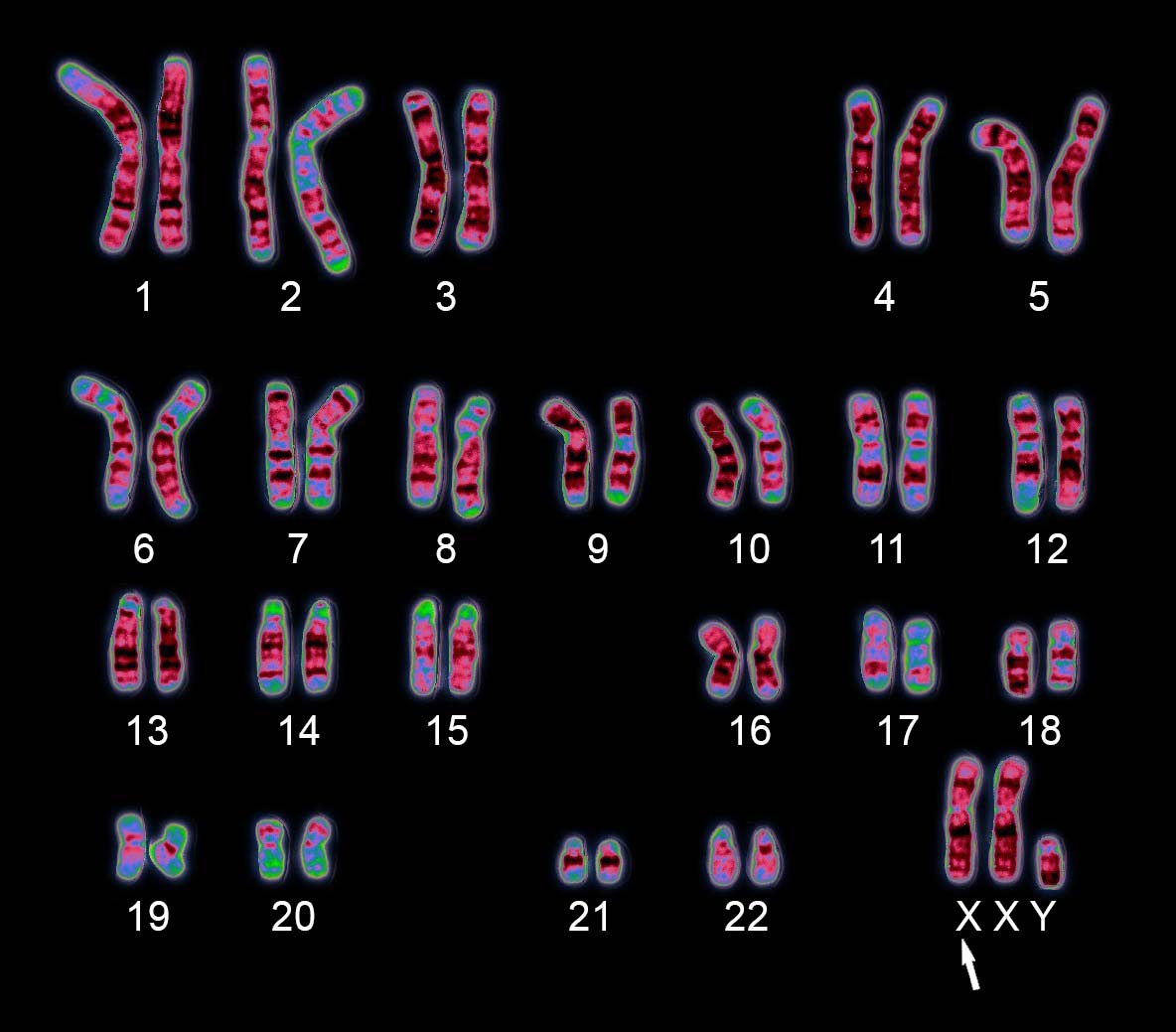Home > Sections > DNA & Cells > Klinefelter Syndrome
Klinefelter Syndrome
Keywords
Klinefelter syndrome, Dr. Harry Klinefelter, tall in height, infertility, penis, enlarged breast tissue, extra X chromosome
Introduction
Klinefelter syndrome affects mainly male patients, and is a genetic disorder where they have an extra X chromosome. It can sometimes go unnoticed, as someone with Klinefelter syndrome can show no symptoms. Others that do show symptoms can show cognitive, social, behavioural and learning difficulties.
Features of Klinefelter Syndrome
Adults can also show a decrease in testosterone production, smaller testes than normal, and other features such as:
- Tall stature
- Enlarged breast tissue
- Infertility
- Enlarged opening of penis
- Small penis
Life expectancy is normal when a male has Klinefelter syndrome, and although there are treatments for the syndrome, as a lot of people will go under the radar and not even get diagnosed with it, it goes without treatment for many people who do have a diagnosis, as the treatment is optional. However, treatments include:
Testosterone replacement: with low testosterone levels, this can be replaced, similar in style to hormone replacement therapy, a supplement of testosterone can be taken. This helps with male features, and also can protect against osteporosis and decrease the onset of autoimmune disease and breast cancer.
Education interventions: support can be given to people with the syndrome, much like they would if they were on the ASD scale, or other disabilities. This can be helpful for self-esteem, and to provide that extra support if necessary.
Therapy: several forms of therapy, such as physical, speech, occupational, behavioural and mental health can be given. These can help with learning difficulties, speech and language problems, muscle tone, and other aspects of the syndrome.
Interesting fact: a film called Chaos Theory, released in 2008, describes a guy's relationship with his wife, where he then finds out he has Klinefelter syndrome, and that his child might not even be his child (as Klinefelter can make men infertile).
Klinefelter syndrome was first mentioned by Dr. Harry Klinefelter in 1942, similar to how Turner syndrome was first recorded. Here's a YouTube video that explains more about Klinefelter syndrome:
Too Long; Didn't Read
Affecting mainly male patients, Klinefelter syndrome is a genetic disorder where men have an extra X chromosome. It can go unnoticed, but can also mean that the patient has cognitive, social, behavioural and learning difficulties.
Features can include having a tall stature, enlarged breast tissue, infertility and a small penis. Life expectancy is normal with this condition, and there are treatments available.
Klinefelter syndrome was discovered by Dr. Harry Klinefelter in 1942, whom it was named after.







 DNA & RNA
DNA & RNA Endocrine System
Endocrine System
